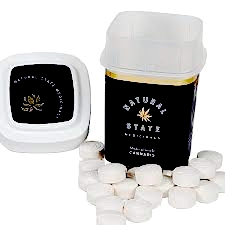
Edibles, cannabis-infused foods, and beverages are becoming an increasingly popular way for patients to use medical cannabis. Orally administered cannabis is different from inhaled cannabis, and it is important to consider these differences. Edibles have certain advantages such as increased potency and a longer duration of effect; however, they are also more difficult to dose for predictable, consistent effects.
Differences Between Inhaled and Ingested Cannabis
Inhaled cannabis is very rapidly absorbed into the bloodstream and distributed to the body with effects felt within several minutes. This almost immediate effect makes it easy to titrate, meaning administering small doses until the desired effect is achieved. It is relatively easy and intuitive for a patient to get the appropriate dose. The effects of inhaled cannabis tend to dissipate within an hour.
The absorption of edibles from the gut, of course, takes longer. It can also be quite variable between individuals, effects usually take from 1-4 hours to be appreciated. In some patients, a diabetic with gastroparesis, for example, it will be even longer. Orally taken cannabinoids can be more potent than inhaled versions. After gut absorption into the bloodstream, D9-THC is metabolized to an 11-hydroxy-THC in the liver before being released into the circulation to the rest of the body. This form of THC is much more potent and longer lasting than the inhaled D9-THC that is immediately released into the circulation.
Gut Absorption of THC
Most patients have noticed that edibles can be unpredictable in the effects produced. It is hard to know when the effects will start, how intense, and how long they will last. The variable responses are not necessarily due to the edible consumed, it is due to the fact cannabinoids like THC are not water-soluble. If a 10mg D9-THC edible is taken on an empty stomach, chances are most of it will stay within the GI tract and not be absorbed. If the same edible is consumed with food having a high fat content, the D9-THC combines with the fat, allowing it to be more easily absorbed from the gut. Much more D9-THC is available for conversion to 11-hydroxy-THC by the liver and more intense and longer-lived effects.
Using Edibles
Patients considering edibles should be somewhat tolerant to the euphoric effects of THC by the inhalation route. The advantages of the high potency and long duration of action become a disadvantage if the patient takes a dose that produces a larger than anticipated effect; patients will experience less intense euphoric effects if tolerant.
Edible Dosing and Titration
Commercially available edibles are usually available as a specified dose of THC, with or without a specified dose of CBD. The THC and CBD combination will likely have fewer side effects. THC alone can produce or worsen anxiety and paranoia in the higher dose ranges, and the addition of CBD will help to minimize this effect. Start with a small THC dose of 2.5 – 5.0mg. A two-hour interval between doses will be an adequate amount of time for effects to fully set up in most patients. Dose increases and interval changes should always be small. By paying close attention to the degree and duration of symptom relief, means journaling, the dose and timing of doses can be determined for each individual. For example: If two doses of 2.5mg D9-THC provide adequate symptom control with tolerable side effects, and last eight hours, the patient then takes a 5mg THC dose three times per day.
Remember when using edible cannabis: always consume food containing fat, start with a low dose, go slow with using more, and journal your results. In this way, you will be able to experience very predictable, effective, and well tolerated effects to treat chronic symptoms with edibles.


